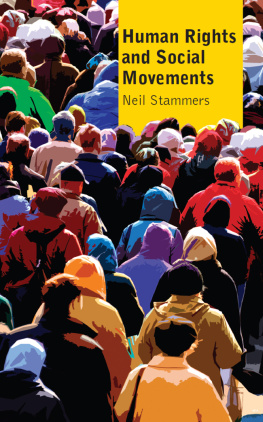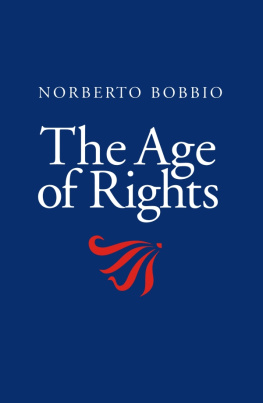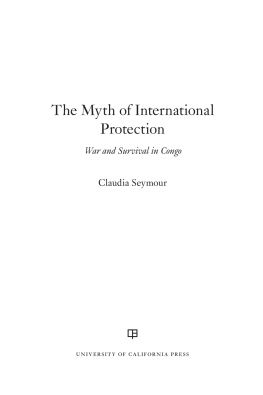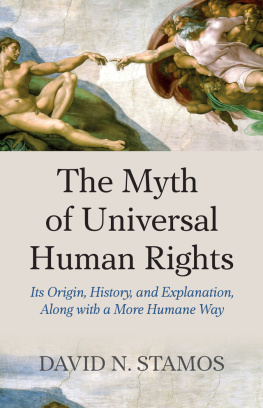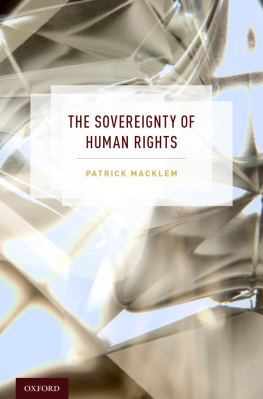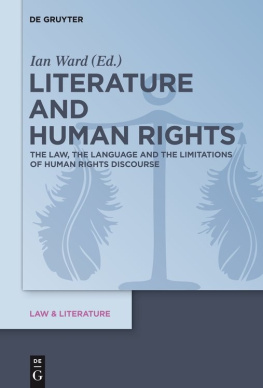Reinbold - Seeing the Myth in Human Rights
Here you can read online Reinbold - Seeing the Myth in Human Rights full text of the book (entire story) in english for free. Download pdf and epub, get meaning, cover and reviews about this ebook. year: 2017, publisher: University of Pennsylvania Press, Inc., genre: Romance novel. Description of the work, (preface) as well as reviews are available. Best literature library LitArk.com created for fans of good reading and offers a wide selection of genres:
Romance novel
Science fiction
Adventure
Detective
Science
History
Home and family
Prose
Art
Politics
Computer
Non-fiction
Religion
Business
Children
Humor
Choose a favorite category and find really read worthwhile books. Enjoy immersion in the world of imagination, feel the emotions of the characters or learn something new for yourself, make an fascinating discovery.

- Book:Seeing the Myth in Human Rights
- Author:
- Publisher:University of Pennsylvania Press, Inc.
- Genre:
- Year:2017
- Rating:5 / 5
- Favourites:Add to favourites
- Your mark:
- 100
- 1
- 2
- 3
- 4
- 5
Seeing the Myth in Human Rights: summary, description and annotation
We offer to read an annotation, description, summary or preface (depends on what the author of the book "Seeing the Myth in Human Rights" wrote himself). If you haven't found the necessary information about the book — write in the comments, we will try to find it.
Seeing the Myth in Human Rights — read online for free the complete book (whole text) full work
Below is the text of the book, divided by pages. System saving the place of the last page read, allows you to conveniently read the book "Seeing the Myth in Human Rights" online for free, without having to search again every time where you left off. Put a bookmark, and you can go to the page where you finished reading at any time.
Font size:
Interval:
Bookmark:
Seeing the Myth in Human Rights
PENNSYLVANIA STUDIES IN HUMAN RIGHTS
Bert B. Lockwood, Jr., Series Editor
A comlete list of books in the series
is available from the publisher.
IN HUMAN RIGHTS

Jenna Reinbold
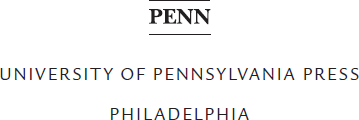
Copyright 2017 University of Pennsylvania Press
All rights reserved. Except for brief quotations used
for purposes of review or scholarly citation, none of this
book may be reproduced in any form by any means without written
permission from the publisher.
Published by
University of Pennsylvania Press
Philadelphia, Pennsylvania 19104-4112
www.upenn.edu/pennpress
Printed in the United States of America
on acid-free paper
1 3 5 7 9 10 8 6 4 2
Library of Congress Cataloging-in-Publication Data
ISBN 978-0-8122-4881-4
to J + I + E
The state is invisible; it must be personified before it can be seen, symbolized before it can be loved, imagined before it can be conceived.
Michael Walzer, On the Role
of Symbolism in Political Thought, 194
There are any number of reasons why one might object to seeing the myth in human rightswhy one might object, in other words, to the work of conceiving of contemporary human rights as a powerful form of modern myth. One might argue that such a conception ties contemporary human rights to a religious logic that such rights were specifically designed to supersede. One might argue that such a conception, in addition to undermining the avowed secularity of such rights, also threatens to undermine their universalityto portray human rights as intractably indebted to culturally specific values and languages and thus to reinforce the perception of human rights as a mechanism for a subtle form of cultural imperialism. More generally, one might argue that the word myth by definition serves to call into question the very legitimacy or viability of human rights. All of these potential objections are valid insofar as they presuppose a definition of myth as a vehicle for, on the one hand, particular religious dogma or, on the other, erroneous or even duplicitous discourse. The central premise of this book, however, is that such presuppositions about myth are unfaithful to contemporary scholarship in the field of religious studies, and that they are therefore blind to a series of important insights that the academic study of religion has to offer into the unique logic, authority, and history of universal human rights.
Contemporary scholarship on religion has converged upon an understanding of myth not merely as a mode of doctrinaire or duplicitous discourse, but as a mode of human labor that serves the broad, enduring function of generating meaning, solidarity, and order within all manner of human communities. This definition does not merely hearken to todays most prominent scholarship on myth; as I will argue, it dovetails in unexpected ways with a prominent body of scholarship on the origin and function of contemporary human rights. Ultimately, I will argue, the framework of myth furnishes a means for making sense of a series of crucial yet paradoxical dynamics within the creation and broadcast of human rights in the twentieth and twenty-first centuries. These paradoxes become particularly visible within the creation and afterlife of the founding document of contemporary human rights: the 1948 Universal Declaration of Human Rights. In the course of negotiating this document over a two-year period, members of the First Commission on Human Rights vaunted the secular credentials of the Declaration even as their descriptions of the logic of human rights were permeated by discourses of sacredness, veneration, and teleology. Even as the Commission came to recognize the impossibility of negotiating a binding and enforceable document and thus committed itself to a conception of the Declaration as educational, it nevertheless placed heavy emphasis upon the Declarations capacity to fundamentally transform the ethical and even the metaphysical landscape of international and domestic law. Finally, even as the Declaration ultimately remains a nonbinding and unenforceable prelude to the numerous official conventions that now define the landscape of human rights law, this document is nevertheless recognized by many theorists as a text commanding a moral and political authority distinct from the more straightforward legal authority of the subsequent conventions that have emerged from it.
Such human rights paradoxes have been acknowledged and speculated upon by theorists ranging from Jacques Derrida to Jrgen Habermas. Yet, while it is not unheard of for commentators to attribute such paradoxes to a religious or quasi-religious logic lurking somewhere within the Declaration, rarely have human rights theorists drawn systematically upon the wealth of scholarship on myth and religion to substantiate such suspicions. In other words, while it is not at all uncommon within todays flourishing field of human rights scholarship to encounter references to the manner in which human rights appear in some way to partake of a religious logicappear to escape the purely secular bounds conventionally ascribed to international lawsuch references are almost always marked by a surprising paucity of efforts to set the resources of religious studies to the work of elucidating these interpenetrations of religion and secularity. Such will be the task of this book. Centering upon the 1948 Universal Declaration of Human Rights, Seeing the Myth in Human Rights draws upon a breadth of historical and theoretical materials to highlight the manner in which this document ultimately functions as one of todays preeminent exemplars of modern political mythmaking. In presenting an analysis of the Declaration through the lens of myth, this book will mobilize and expand upon a variety of important insights and texts from within the field of religious studies, and it will put these insights and texts into conversation with thinkers from within the realms of, among other things, political philosophy, critical legal studies, and human rights historiography. Such, I will argue, is the nature of myth as understood by todays most prominent scholars of religion: myth is a phenomenon that is not merely germane to the exploration of specific religious narratives but is key to a broader understanding of the nature of political authority in the modern world.
On December 10, 1998, the United States Information Agency released a special edition of its Issues of Democracy to commemorate the fiftieth anniversary of the adoption of the Universal Declaration of Human Rights. President William Jefferson Clinton headed up this special edition with his own commemoration of the Declaration, which he described as one of the most important documents in the twentieth century, indeed of human history. The Declaration, he asserted,
represents the first time men and women sought to articulate the core aspirations of all the worlds people. The authors of the Universal Declaration struggled to understand and harmonize their differing cultural traditions and convictions during a three-year debate that culminated in a set of rights recognized by all as transcending national, social, and cultural boundaries.... On December 10, 1948, the United Nations General Assembly adopted the Universal Declaration without a single dissenting vote. Over the past half century, the Declarations thirty articles have entered the consciousness of people around the world. They are now invoked routinely in constitutions and courts. They set a standard against which we must all now measure ourselves.
Next pageFont size:
Interval:
Bookmark:
Similar books «Seeing the Myth in Human Rights»
Look at similar books to Seeing the Myth in Human Rights. We have selected literature similar in name and meaning in the hope of providing readers with more options to find new, interesting, not yet read works.
Discussion, reviews of the book Seeing the Myth in Human Rights and just readers' own opinions. Leave your comments, write what you think about the work, its meaning or the main characters. Specify what exactly you liked and what you didn't like, and why you think so.



